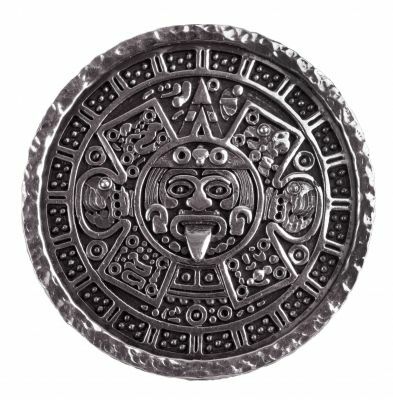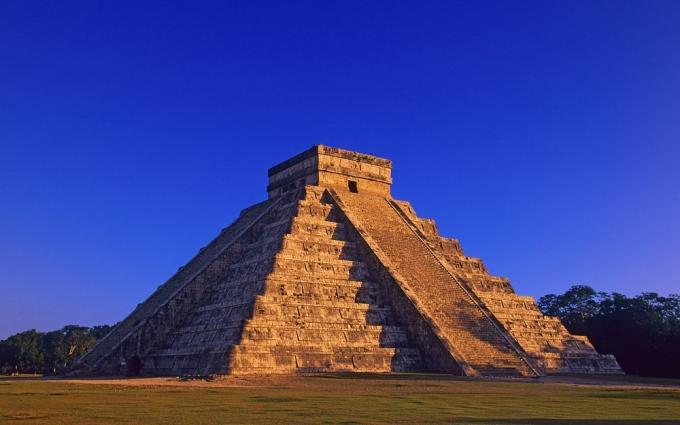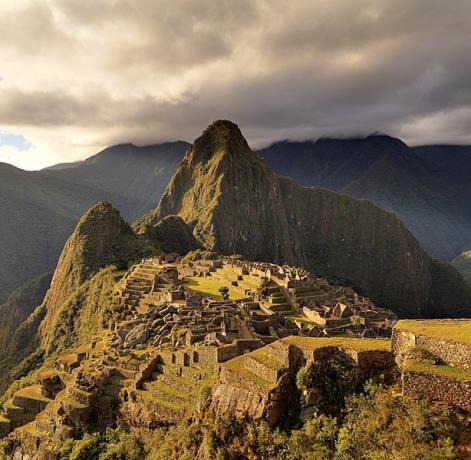The General History invokes, quite vehemently, the discovery of america by Christopher Columbus. Until then, it was considered that the “Old World” was unaware of the presence of civilized and developed peoples of the “New World”.
However, historical records portray the existence of civilized peoples who already inhabited the continent long before the arrival of the Europeans.
Called pre-Columbian, these civilizations were endowed with their own economic and administrative systems, as well as characteristic culture, habits and customs.
Before we talk about the main pre-columbian civilizations, like the Incas, Mayans and Aztecs, we will deal with those peoples who discovered America long before the Europeans.
Index
- What are pre-Columbian peoples?
-
The main pre-Columbian civilizations
- Mayan civilization
- Aztec civilization
- inca civilization
What are pre-Columbian peoples?
You pre-columbian peoples they are so called because they lived in America before the arrival of Christopher Columbus in 1492.
In fact, the term includes since the original settlement, still in the
Paleolithic Period, until the European colonization in the Modern age. However, it is more used to refer to the context of the greatest civilizations.Thus, the peoples who inhabited the following regions of Mesoamerica (Toltec, Olmec, Maya, Mixtec and Aztec) and the Andes (Incas, Moche, Cañaris and Chibchas) stand out.
Documents give account of great deeds registered by these civilizations. The Aztecs, for example, built the impressive Tenochtitlán, now Mexico City.

The main pre-Columbian civilizations
Despite the existence of so many peoples, we will focus on the three greatest civilizations of that period: Incas, Mayans and Aztecs.
Mayan civilization
O mayan people inhabited the region of tropical forests of the current territories of Honduras, Guatemala and southern region of Mexico (Yucatan Peninsula), between the 4th centuries BC. C and IX a. Ç.
The basis of society was formed by peasants, urban workers and artisans. These were part of the less favored class and, like other civilizations, had to pay high taxes.
The nobility, in turn, inhabited the urban area together with the priests, military chiefs and administrators of the empire.
Thus, the cities made up a religious and political nucleus under the government of a theocratic state. This means that the emperor was considered a representative of the gods on Earth. Gods because the Mayans were polytheists, that is, they worshiped more than one deity, and believed in entities linked to nature.
The basis of its economy was agriculture, with the planting of beans, corn and tubers, among other products. The activity was driven by the development of irrigation techniques. Furthermore, they were good merchants and exchanged products with neighboring peoples and the interior of the empire.
Another sector that deserves to be highlighted is handicraft, represented by the use of paints and the spinning of clothes and fabrics. Such practices had the help of Mathematics. The Mayans were the creators of decimal places and zero value.
Furthermore, they own a calendar complex that divided the year into 206 days determined by the movements of the stars.

Recording dates, events, harvests, wars, and tax collection were made possible by writing. The Mayans, like the Egyptians, adopted the hieroglyphic system, based on drawings and symbols. The skill of the Mayans was also present in their constructions.
The architecture showed considerable advance through pyramids, temples and palaces built by these people.
However, a flawed detail contributed to the end of mayan civilization. As they never formed a unified empire, the region was vulnerable to the domination of other peoples, which, in fact, happened.
In the ninth and tenth centuries, the region was invaded by the Toltecs, also inhabitants of Mesoamerica, who dominated the Maya.
Aztec civilization
- Free Online Inclusive Education Course
- Free Online Toy Library and Learning Course
- Free Online Math Games Course in Early Childhood Education
- Free Online Pedagogical Cultural Workshops Course
THE aztec civilization inhabited the region whereat the moment is Mexico, between the 14th and 16th centuries.
She was the founder of the city of Tenochtitlán (Mexico City), in the 14th century, in a swamp region near Lake Texcoco. Their language was Nahuatl and they were also called Mexico, something like “Lake of the Moon” .
Society was organized in hierarchical order. At the base were the peasants, artisans and urban workers. At the top, the nobility composed of the emperor, priests and military chiefs. The emperor was also the head of the army and forced the lower class of society to carry out compulsory work on his behalf.
This was done through work on public works such as irrigation canals, roads, temples and pyramids. Aztec agriculture was intensively developed thanks to efficient techniques such as the chinampas (cultivation islands) and drainage works. The main crops were pepper, tomato, corn and cocoa. This was even used as a bargaining chip by the Aztec people.

Civilization also stood out in the invention of mathematical and astronomical concepts, in addition to practicing writing based on the use of symbols and drawings (pictographs). As for the calendar, they adapted the Mayan system and introduced some modifications.
Aztec crafts were endowed with extreme wealth demonstrated in gold and silver objects, hand-painted items and fabrics made by themselves. Many of the items are currently on display in museums in Mexico City.
Like the Mayans, the Aztecs had a polytheistic religion. The gods worshiped were related to elements of nature, such as the Sun, Rain, Thunder and Moon gods.
The development of architecture, by the way, was reflected in the construction of pyramids destined for religious cults and human sacrifices in honor of the gods. The intention was to make the deities calmer and happier.
Unlike the Mayans, the Aztecs formed an empire that, under the command of Montezuma II, at the beginning of the 16th century, came to be composed of 500 cities. However, its end came in 1519, through the spanish invasion. The Europeans dominated the people, took a large part of their wealth and enslaved them in the mines of gold and silver.
inca civilization
THE inca civilization inhabited the region of the Andes Mountains in territory corresponding to Peru, Bolivia, Chile and Ecuador. The holy city of Cusco, capital of the Empire, was founded in the 13th century. His language was Quechua, spoken throughout the territory in various dialects. It was the largest empire among the three, reaching 12 million subjects.
His territorial conquests began in the Andes and along the coast of Pacific Ocean, at the beginning of the 15th century. One hundred years later, civilization reached its peak.
The composition of society followed the molds of other civilizations, that is, hierarchized into three layers:
- Base formed by artisans and peasants, the lower classes;
- Middle class made up of civil servants and skilled workers;
- Top formed by the emperor and nobility (rulers, military chiefs, judges and priests).
The emperor was known as Sapa Inca and considered a god on Earth. He received heavy taxes from the poorest in the form of goods or works in public works.
The economy of the Incas was based on terrace farming, steps formed on the backs of mountains. In them, they planted beans, potatoes and corn, the sacred food.
They raised animals such as the llama, vicuñas and alpacas. Domesticated, they served as a means of transport, as well as a source of meat, milk and wool.
In handicrafts, they became known for their objects made in gold and silver, as well as quality jewelry and fabrics. However, the greatest highlight of this civilization, perhaps, is in architecture.
A great example is in the city of Machu Picchu, discovered in 1911. Its structure managed to translate how the urban formation of the Incas was efficient. Furthermore, civilization erected large buildings, such as houses, palaces and temples, based on embedded stone blocks.

They also built a complex of roads linking the entire empire. The system had two main roads running north-south: one, about 3,600 km long, ran along the Pacific coast and the another, with almost the same length, ran through the Andes, as well as irrigation canals to divert the course of rivers to the villages.
The Incas also developed the quipo, a counting system practiced on an instrument made with colored strings. Each represented a count. With the quipo, the Incans added and recorded taxes, inhabitants and harvests.

The only issue is that, despite so many contributions, the Inca writing system was not developed.
At religion of the incas, they worshiped the god Inti (the Sun god), as well as sacred animals such as the jaguar and condor. They also believed in Viracocha, the creator of everything. Unfortunately, the Incas were dominated by the Spaniards in 1532, a few years after the Aztec domination.
Read more:
- the people of america
- Discover Milpa Alta, the place where Aztec traditions are still preserved
The password has been sent to your email.
